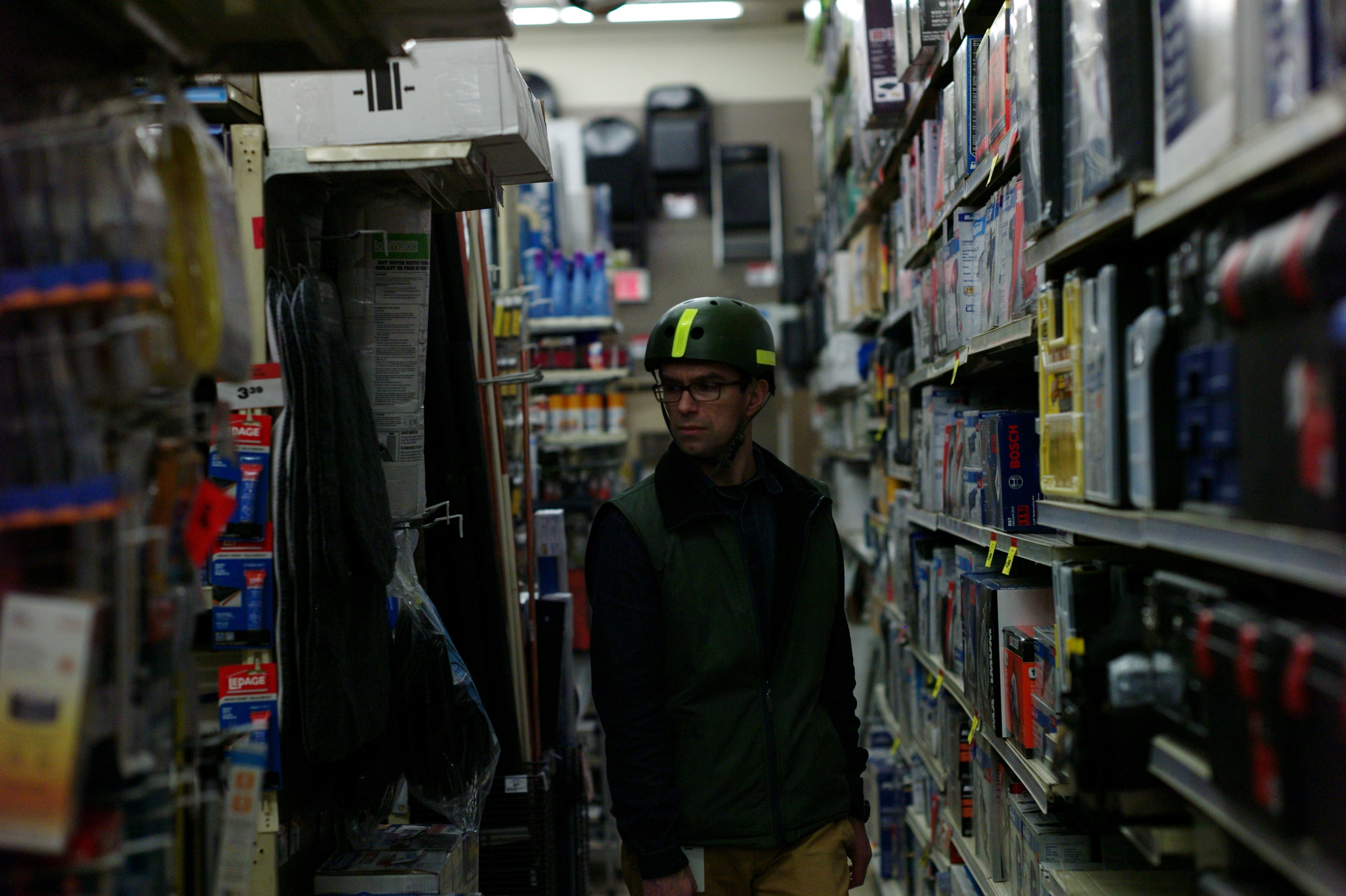Leica APO Summicron M 75mm f/2 ASPH Lens Review
Introduction
Leica camera is confident that their new line up of 75mm lenses will be a success. There is plenty of evidence to back this up. One the one hand, there is the new which is one of the fastest telephoto lenses costing around $13,000 USD before taxes. Leica Summarit-M 75mm f/2.4 and the previous version with f/2.5 aperture lenses are the entry-level telephoto lenses from Leica camera’s line-up of telephoto lenses. Perhaps the most successful and legendary lens among the telephoto lenses is the Leica 75mm f/2.0 APO Summicron-M ASPH lens.
Leica 75mm f/2.0 APO Summicron-M ASPH lens has aspherical surfaces that eliminate chromatic aberration issues common with most lenses. This highly sophisticated design has earned this lens the APO abbreviation which stands to apochromatic. In a way, Leica 75mm f/2.0 APO Summicron-M ASPH lens delivers results that set the standard for most of the telephoto lenses in the industry as the benchmark.
Upon closer examination, it is easy to notice why this lens is such a stellar performer. The resume of Leica 75mm f/2.0 APO Summicron-M ASPH lens is amazing. It weighs in at 430 grams or 15.2 oz. with 7 elements in 5 groups and a minimum focus distance of only 0.7 meters or 2.3′ feet. This makes Leica 75mm f/2.0 APO Summicron-M ASPH lens almost unbeatable as a telephoto lens because of its lightweight and compact design. Moreover, an APO lens wıth vırtually distortion-free image rendering capabilities throughout the entire range is a great achievement in lens design.

Yes, this is all right from a technical point of view but how Leica 75mm f/2.0 APO Summicron-M ASPH lens renders images in real life is another matter. As a proud owner of Leica’s 75mm Summilux-M f/1.4, I feel that Leica 75mm f/2.0 APO Summicron-M ASPH lens still needs to evolve in character.
You may agree or disagree, but I find that Leica’s latest line up of lenses lack what Leica had during the days of Dr.Walter Mandler who designed such legendary lenses like Leica Summilux-M 50mm f/1.4 ASPH. Lens.
For me, a photograph must tell a story within a story. That means a photograph must transmit an emotion beyond an accurate rendering of an image. A photograph is truly timeless when it conveys a feeling that the lens can capture beyond sharpness and accuracy.
Think of all the great photographs taken with Leica cameras. Che’s legendary portrait that has been printed on almost every conceivable surface. A simple portrait tells a story beyond just an accurate depiction of a face; it conveys emotion through the way a lens and a camera renders an image.
Today, most lenses are very precise and sharp, yet they fail in creating a character that allows a photographer to tell his story through photographs. Most people would not be able to distinguish the difference between a smartphone picture and a DSLR image with actual pixels and sharpness. For most, it does not matter because they view photographs on their small phone screens or laptop monitors.

Leica camera had the know-how and their concoction of optics created magical results with their telephoto lenses, and that is what made Che’s portrait legendary. Now, Leica camera produces lenses with apo chromatically corrected optics such as Leica 75mm f/2.0 APO Summicron-M ASPH lens to render not only images of free of purple fringing but also digital noise-free. Then somewhere along the line, something got lost.
The story of APO-chromatic lenses was not a simple journey in the evolution of lens technology. Do you recall the days when the first CD technology surfaced eroding the stronghold of analog vinyl records?
The result was vinyl records were lost for almost two decades under the digital sound madness that deleted and erased any sense of musical richness to squeeze it to MP3 format. Today, iTunes and Amazon sell this form of music because the younger generation never got to appreciate the physical sense of holding a record much less appreciate the quality of an analog recording.
Now, it is three decades on since the loss of vinyl records and analog recordings, and they are making a comeback. When you put that record on a turntable, you can hear the Beatles or Michael Jackson sing with a “character” that can’t even be duplicated with the best of digital technology.
This is what I am talking about when I say that Leica 75mm f/2.0 APO Summicron-M ASPH lens is accurate and sharp, but the character of the lens is very different than the lenses produced in the days of Dr.Mandler. So much so that his favorite lens Leica 75m f/1.4 Summilux-M lens is not in production but his ideas have been adopted to produce today’s Leica 75mm Noctilux-M f/1.25 ASPH lens.
In the same way, some may find Leica lenses of the earlier eras which were conceived by genius designers and manufactured by hand, actually captured the magic of the golden age of film and photography. Technological advancements have resulted in lenses that are more uniform and accurate with incremental improvements in attaining a look that is more in-line with the current taste in photography. Hence, Leica 75mm f/2.0 APO Summicron-M ASPH lens is the lens that speaks of the highest achievement in optics technology with a modern taste for photography.

Does this mean that the new Leica 75mm f/2.0 APO Summicron-M ASPH lens is not as good as the older generation of lenses? Not really, it is different, better optically speaking but with much less character.
It is important to remember that long gone are the lenses with f/0.7 to film in the darkest recesses of a candlelit room that made history. Today, the economics of profit-driven design has replaced much of what made the older generation of photographers fall in love with their lenses in the same way they still feel a sense of affinity for the film rather than digital cameras.
Even when Volkswagen was designed to be “affordable” with their Beatle look or Ford’s Mustang rolling off the assembly line to give every man in America an opportunity to own a sports car, there was “magic” that made each of these products legends.
The question today is perhaps is not what separates one product from the rest but what makes money for the shareholders’ of the company. Leica camera has only adapted to the times much like old Swiss watch companies saw the prudence of marketing Swatch for the younger generation.
For me, Leica lenses are legendary achievements in optical innovation and design. This is why I find a new kind of appreciation for the Leica 75mm f/2.0 APO Summicron-M ASPH lens because it allows me to capture images as a professional that meets the needs of today’s clientele. y love of their lenses and design will continue even though much is lost through changes in company culture, as ELCAN was lost to Hughes then disappeared into oblivion as just another company on a list of holdings.
For personal taste and artistic interpretation, I would still photograph with a Leica 75mm Summilux-M f/1.4, but when professional work calls for a specific look, I will still turn to my trusted Leica 75mm f/2.0 APO Summicron-M ASPH lens for accurate results.
I realize that times are changing and my love and appreciation of lenses must also adhere to the times. Yes, I do love the lenses from an earlier period, and although much is lost through changes in technology and company culture, I would say Leica 75mm f/2.0 APO Summicron-M ASPH lens is a worthwhile investment.
It is crucial to look back and see that if companies don’t adapt to the time’s changes forces of the market will gobble up companies mercilessly as ELCAN was lost to Hughes then disappeared into oblivion as just another company on a list of holdings. So let’s celebrate what Leica Camera is an innovative company that continues to push the boundaries of optical design and engineering to new heights.

Leica 75mm f/2.0 APO Summicron-M ASPH lens is a fantastic lens, and I would highly recommend it especially for portrait photography. If you are shooting weddings, this lens will serve you well in capturing accurate, crisp photographs. Of course, being a manual focus lens will present particular challenges in nailing focus, but that is the trade-off for using Leica M lenses. For those who must have autofocus Leica SL camera along with Leica SL lenses will provide a suitable alternative.
Leica 75mm f/2.0 APO Summicron-M ASPH lens is perfect if you are shooting high school teenagers’ graduation photographs or at your studio for those beautiful portraits that people want to hang on their living rooms printed on semi-gloss paper in A3 sizes.
Yes, the versatility is there for those who wish to exploit it for their professional use. For those who are amateurs, I suggest that they make the investment of purchasing this incredible lens. For those who have a smaller budget, Leica Summarit line of lenses offers a f/2.4 version for all around general photography. Leica 75mm Summarit-M f/2.4 is not only affordable but helps to capture those crisp, sharp rendering of images and for a small sacrifice of one-stop of light.

On a more personal note, I am a dreamer. I envision a Leica 75mm Summilux f/1.4 APO that is short and fat which fits perfectly into my palm where the lens barrel is 60mm rather than 49mm of today’s design. This lens may never materialize instead we have the Leica 75mm Noctilux-M f/1.25 lens to content with which is perhaps a better alternative.
Leica camera is producing these excellent lenses in chrome and matt black some will be introduced in limited editions with red color or black chrome. Who knows? Just like Martin Lutherking Jr. who envisioned a brighter future, I too may see my dreams fulfilled of owning some of these limited collector items someday.
Until then, I say if you are a lucky owner of a Leica 75mm f/2.0 APO Summicron-M ASPH lens know that you are having one of the most accurate lenses in the world, also one of the fastest.
As far as capturing images, the 6-bit coding does allow much correcting to be done in camera for vignetting and lens barrel distortion resulting in near perfect visual renditions. For those who still feel that additional touching up is needed there are plenty of software options like Adobe Lightroom for altering anything from saturation to contrast. If you need to improve your skills for editing your photos I offer photography workshops around the world.

On these photographs, I did not remove any of the vignetting or alter the images to convey the way Leica 75mm f/2.0 APO Summicron-M ASPH lens renders images. On our review video, you can see that photos taken under unfriendly lighting conditions are real achievements for a lens as the iso is in respectable numbers to make the photographs virtually noise free.
Colors are rather accurate considering that these photographs were taken with a Leica M9 – P to which has a CCD sensor. Leica camera’s newer cameras like the Leica M10 or Leica M240 feature CMOS sensors that have a higher dynamic range and more “accurate” colors under difficult lighting conditions.

Medium format cameras still use CCD sensors for a good reason but require artificial lighting in almost all circumstances. I chose to use my Leica M9 – P instead of my M-P 240 camera to show that the speed of f/2.0 is sufficient enough to create images with proper color and contrast.
If you want to know how Leica 75mm f/2.0 APO Summicron-M ASPH lens will render images on a CMOS sensor, please follow our reviews as we compare Leica 75mm Summilux – M f/1.4 with M9 – P CCD sensor camera with this lens. The photographs from each lens will indeed show what two different lens designs can convey regarding color and character.

For the best prices online you can click the links below. Your clicks help to keep this website independent.
Leica 75mm f/2.0 APO Summicron-M ASPH lens
Leica 75mm Noctilux-M f/1.25 lens
Leica 75mm Summarit-M f/2.4 lens
Leica M-P (Typ 240) Digital Rangefinder Camera
Leica M Monochrom (Typ 246) camera.
Leica Summilux-M 50mm f/1.4 ASPH. Lens
For my upcoming 2018 photography workshops, here are the links
I hope you have enjoyed this completely independent review. I look forward to hearing from you with your comments and please free to contribute to our website with your own experiences and reviews.
More importantly, help us keep this website alive by spreading the word about Leica Review.
Thank you
OZ YILMAZ – Leica Review Team
